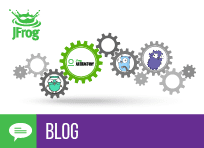How to set up a Private, Remote and Virtual Go Registry
The simplest way to manage and organize your Go dependencies is with a Go Repository. You need reliable, secure, consistent and efficient access to your dependencies that are shared across your team, in a central location. Including a place to set up multiple registries, that work transparently with the Go client. With the JFrog free …







